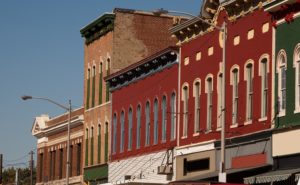Rural communities will be on display in October during a weeklong inaugural celebration by the Indiana Office of Community and Rural Affairs (OCRA) called Downtown Development Week.
The celebration of cities and towns across Indiana will be October 8-12. During the week, Lt. Governor Suzanne Crouch will visit communities, determined in part by a photo contest going on now until July 8.

More details of the program and contest below:
“The downtowns of our rural communities have really transformed under the leadership of the Indiana Main Streets, elected officials and volunteers,” said Lt. Governor Suzanne Crouch. “It is time we highlight the hard work that was put into revitalizing downtown spaces, and I look forward to joining the celebrations.”
This week will be an opportunity for communities across the state to host events to celebrate their communities and encourage comradery through events and activities. Downtown Development Week, which will run from Oct. 8 – 12, 2018, will honor Indiana’s cities and towns’ commitment to preserve and invest in the heart of the community, the downtown.
“We are very excited to launch this new week to celebrate the focal points of our rural communities,” said Jodi Golden, Executive Director of OCRA. “A thriving downtown is important to a community’s continued development and we want to celebrate all of the amenities they have to offer.”
To generate excitement for Downtown Development Week, OCRA is planning a variety of events, including a statewide proclamation honoring Indiana downtowns, free placemaking workshops in Bargersville and Grant County and promoting community events across OCRA social media.
Starting today, participants are encouraged to submit photos in the “Bring the LG to My Community” contest by using #LGtomyDowntown on each entry. These photos should capture the spirit and uniqueness of your community and downtown. Also, tell us why Lt. Gov. Crouch should visit your community. Crouch may visit your town during Downtown Development Week, if you are chosen as a winner. Photos must be submitted by midnight on July 8, 2018 to be eligible.
To view more information, including complete contest rules, on Downtown Development Week, visit www.in.gov/ocra/2896.htm.

 So says Vancouver, Washington, at least.
So says Vancouver, Washington, at least.